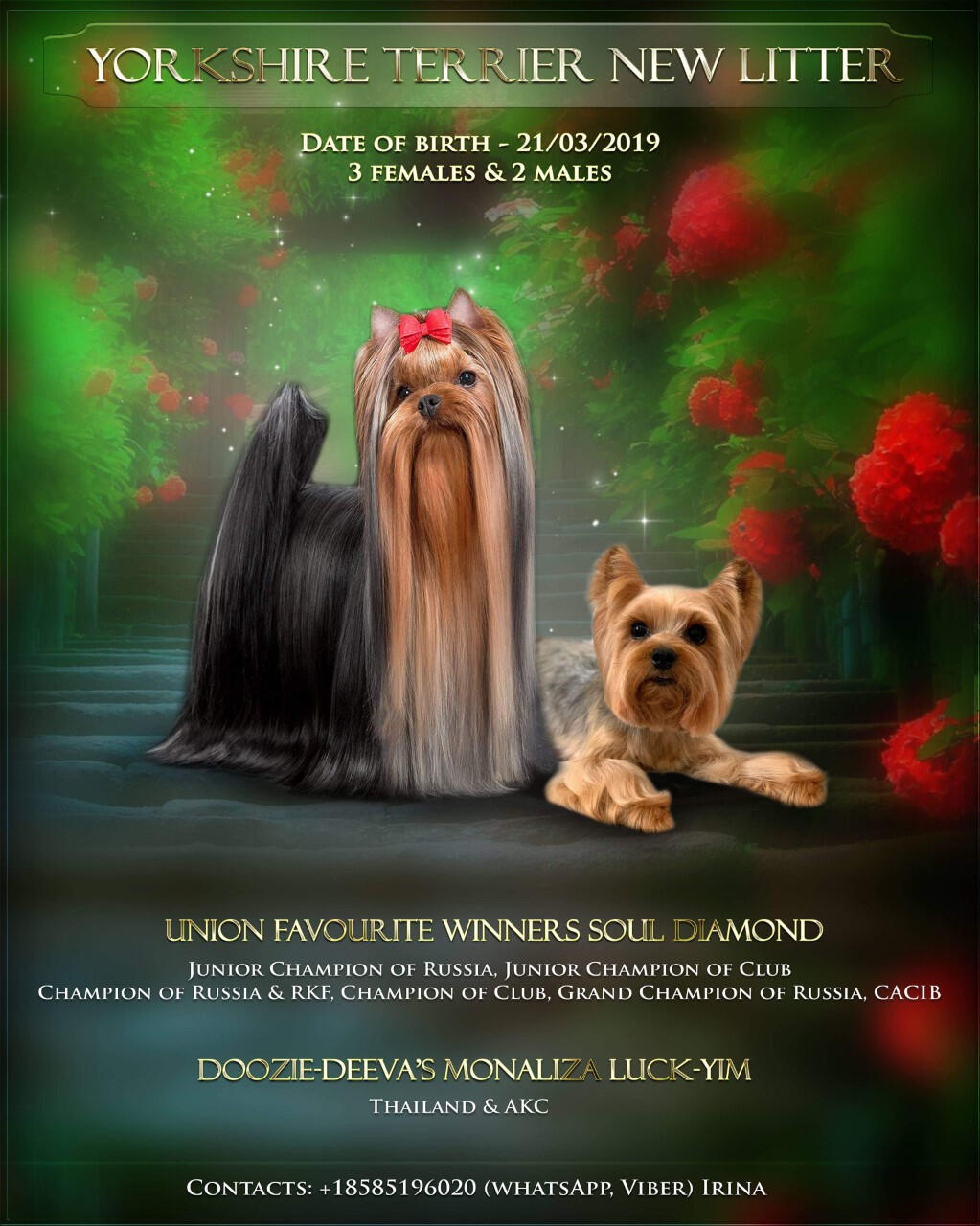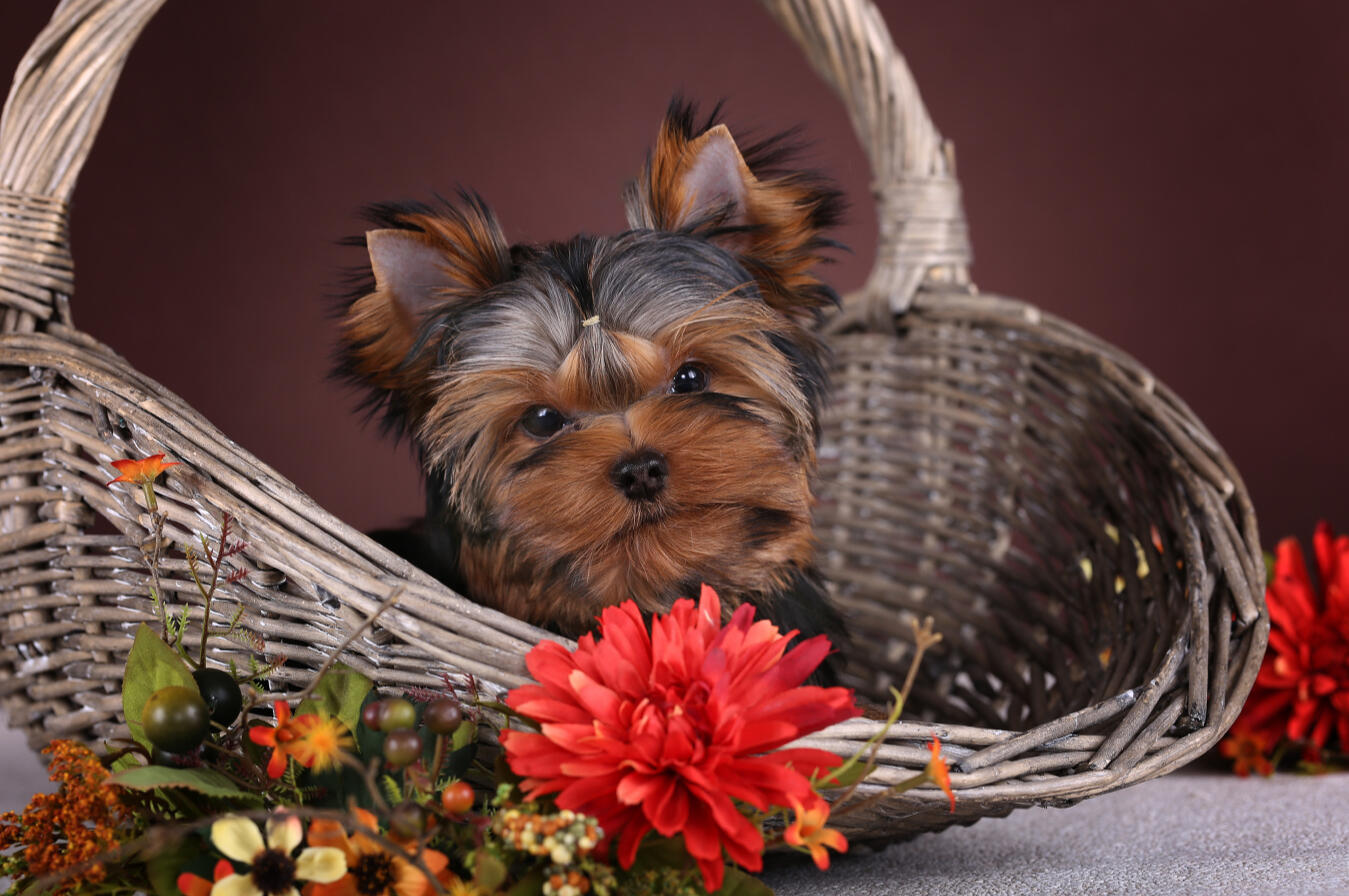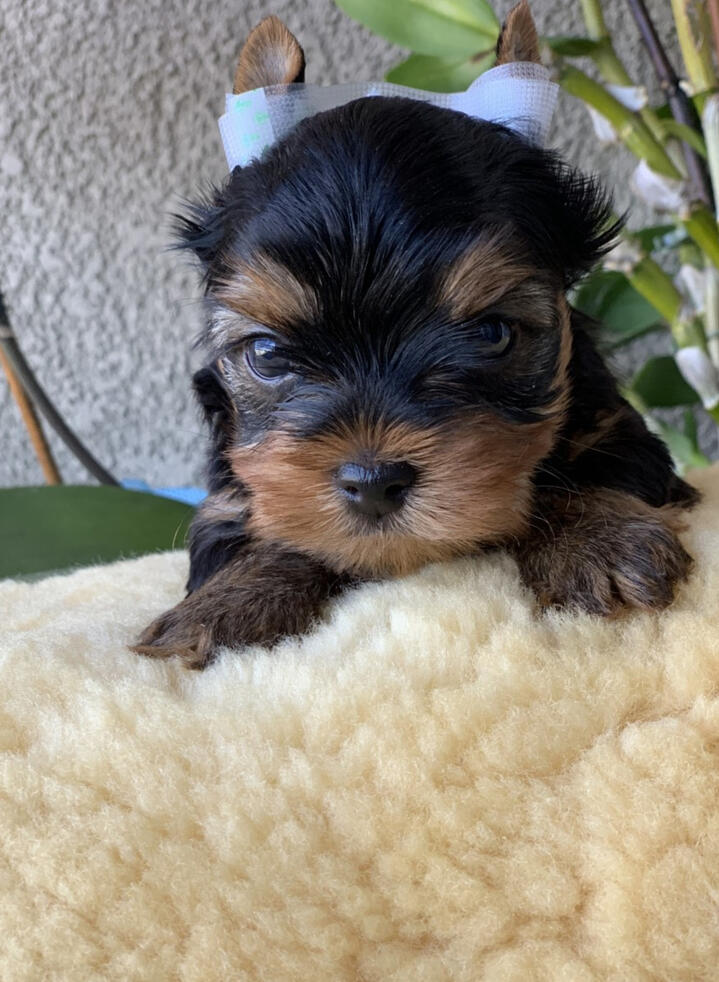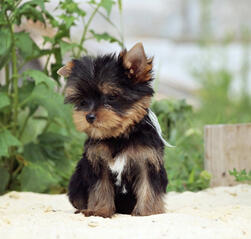Yorkie Paradise





\

The Yorkshire Terrier, nicknamed the Yorkie, seems quite full of himself, and why not? With the long silky coat and perky topknot, the Yorkshire Terrier is one of the most glamorous representatives of the dog world, sure to attract attention wherever they go.
The long steel-blue and tan coat may be the Yorkie's crowning glory, but it's their personality that truly endears them to family. Oblivious to their small size (weighing in at no more than seven pounds), the Yorkshire Terrier is a big dog in a small body, always on the lookout for adventure and maybe even a bit of trouble.
Yorkshire Terriers are affectionate towards their people as one would expect from a companion dog, but true to their terrier heritage, they're sometimes suspicious of strangers, and will bark at strange sounds and intruders.
They also can be aggressive toward strange dogs, and no squirrel is safe from them.
Despite their bravado, Yorkshire Terriers have a soft side too. They need lots of attention and time with their family. Long hours of being left alone is not for them. It's not a good idea to over-protect your Yorkie, however; they'll pick up on your feelings very quickly, and if your actions say the world's a dangerous place for them, they can become neurotic.
Because of their size, Yorkshire Terriers do better with older children who've been taught to respect them than with toddlers and small children. They can become snappish if they're startled or teased.
As long as they get some exercise every day — perhaps a good play session in the living room or a nice walk around the block — Yorkies make fine apartment dogs.
A glamorous coat, small size, spunky personality, and undying loyalty to his people. Is it any wonder that Yorkshire Terriers are the second most popular dog breed in the U.S. today?
History
During the Industrial Revolution in England, Scottish workers came to Yorkshire to work in the coal mines, textile mills, and factories, bringing with them a dog known as a Clydesdale Terrier or Paisley Terrier. These dogs were much larger than the Yorkshire Terrier we know today, and it's thought that they were used primarily to catch rats in the mills.
The Clydesdale Terriers were probably crossed with other types of terrier, perhaps the English Black and Tan Toy Terrier and the Skye Terrier. The Waterside Terrier may also have contributed to the development of the Yorkshire Terrier. This was a small dog with a long blue-gray coat.
In 1861, a Yorkshire Terrier was shown in a bench show as a "broken-haired Scotch Terrier." A dog named Huddersfield Ben, born in 1865, became a popular show dog and is considered to be the father of the modern Yorkshire Terrier. The breed acquired that name in 1870 because that's where most of its development had taken place.
Yorkshire Terriers were first registered in the British Kennel Club stud book in 1874. The first Yorkshire Terrier breed club in England was formed in 1898.
The earliest record of a Yorkshire Terrier being born in the U.S. was in 1872. Yorkshire Terriers were able to compete in dog shows as early as 1878. In those early shows, Yorkshire Terriers classes were divided by weight — under 5 pounds and 5 pounds and over. Eventually, exhibitors settled on one class with an average of between 3 and 7 pounds.
Personality
Smart and self-assured, the Yorkshire Terrier is a combination of endearingly small size and adventurous terrier spirit. The breed displays a range of personalities. Some are cuddly and perky, wanting nothing more than to follow in their people's footsteps throughout the day. Others are mischievous, outgoing, and into everything.
Puppies are born black, with the blue and tan coat developing gradually, usually after they're a year old. Puppies that start to lighten before they're a year old often turn gray rather than blue.
From the back of the head to the tip of the tail, the hair is a dark steel-blue — sometimes described as the blue of a rifle barrel — with a bluish sheen when seen in the sunlight. The head is bright gold, not reddish, with tan hairs that are darker at the roots than at the ends. The headfall (the hair that falls over the face) is long with the same golden hue as the face.
The hair is slightly darker at the base of the ears and on the muzzle. The tan on the head doesn't extend past the ears, and no black hairs are mixed in with the tan. Yorkshire Terriers have tan legs as well, but the tan color doesn't extend above the elbow.
An interesting fact is that Yorkies tend to become lighter with age. Hormonal changes can also affect color. Females in heat go lighter, and then darken again after their season is over.
Grooming a long-haired Yorkshire Terrier is not for the faint of heart, especially if he has a "soft" coat that tangles easily instead of a silky one! Even if you keep his coat trimmed short, gently brush your Yorkie's coat every day to help prevent mats and keep him clean.
